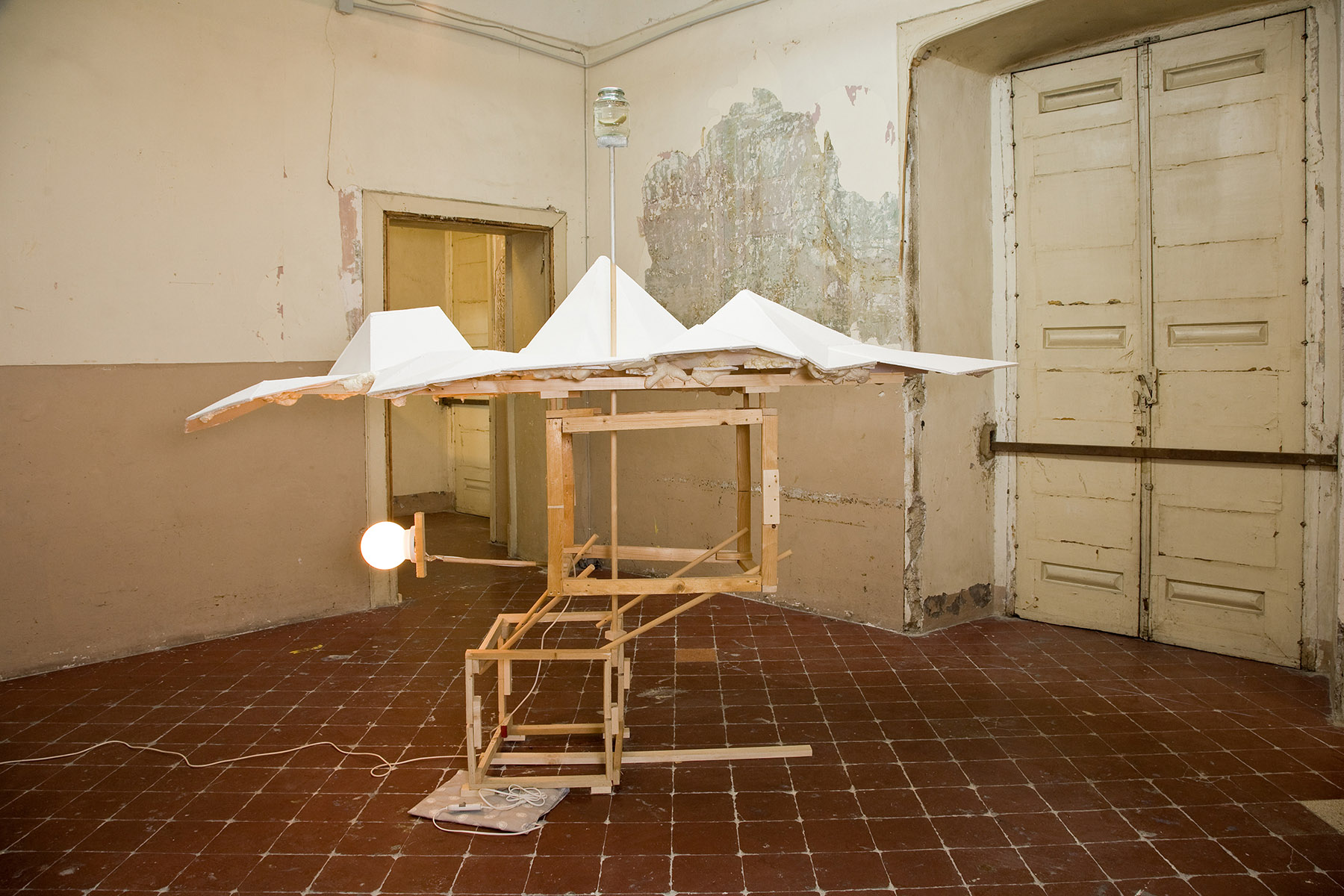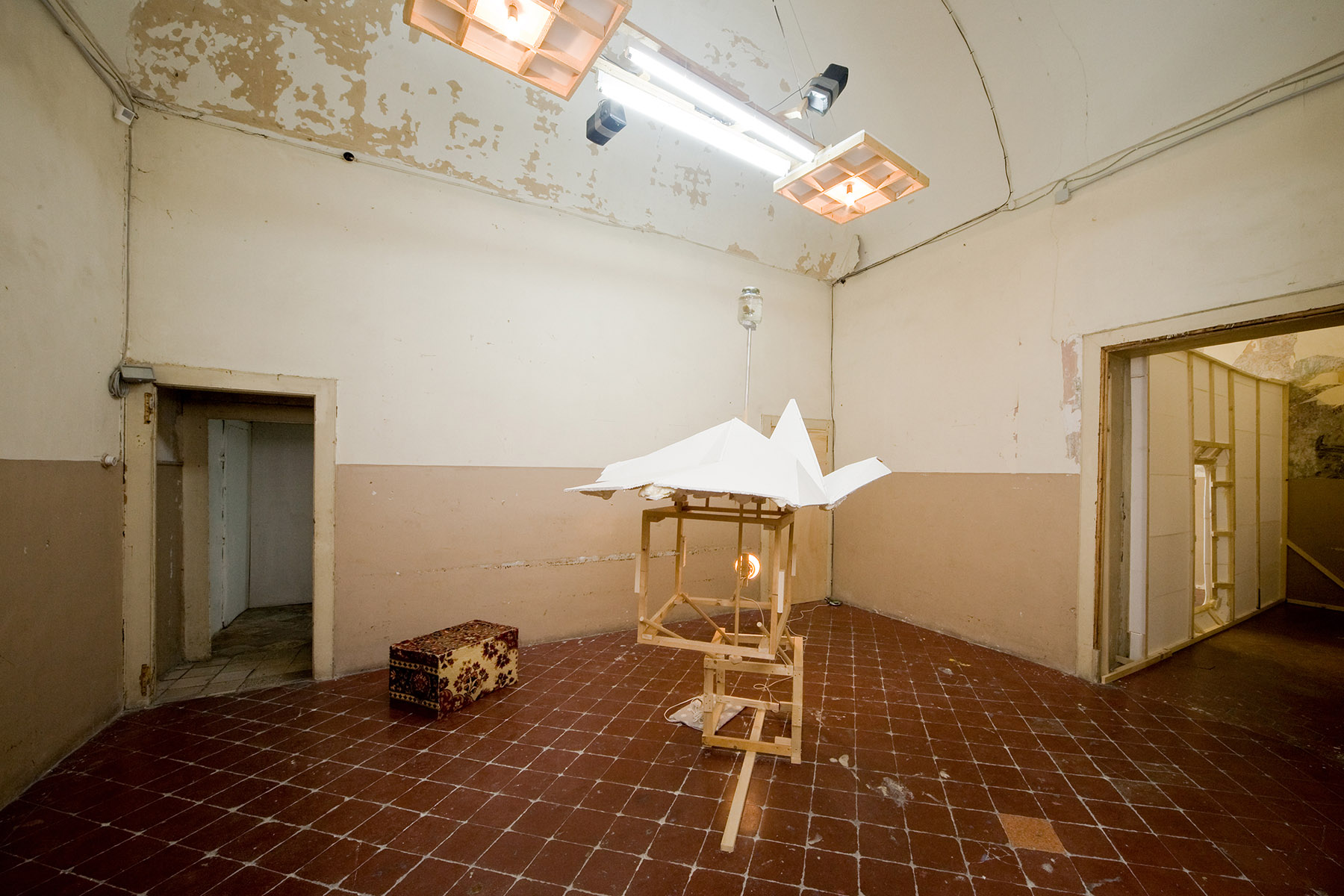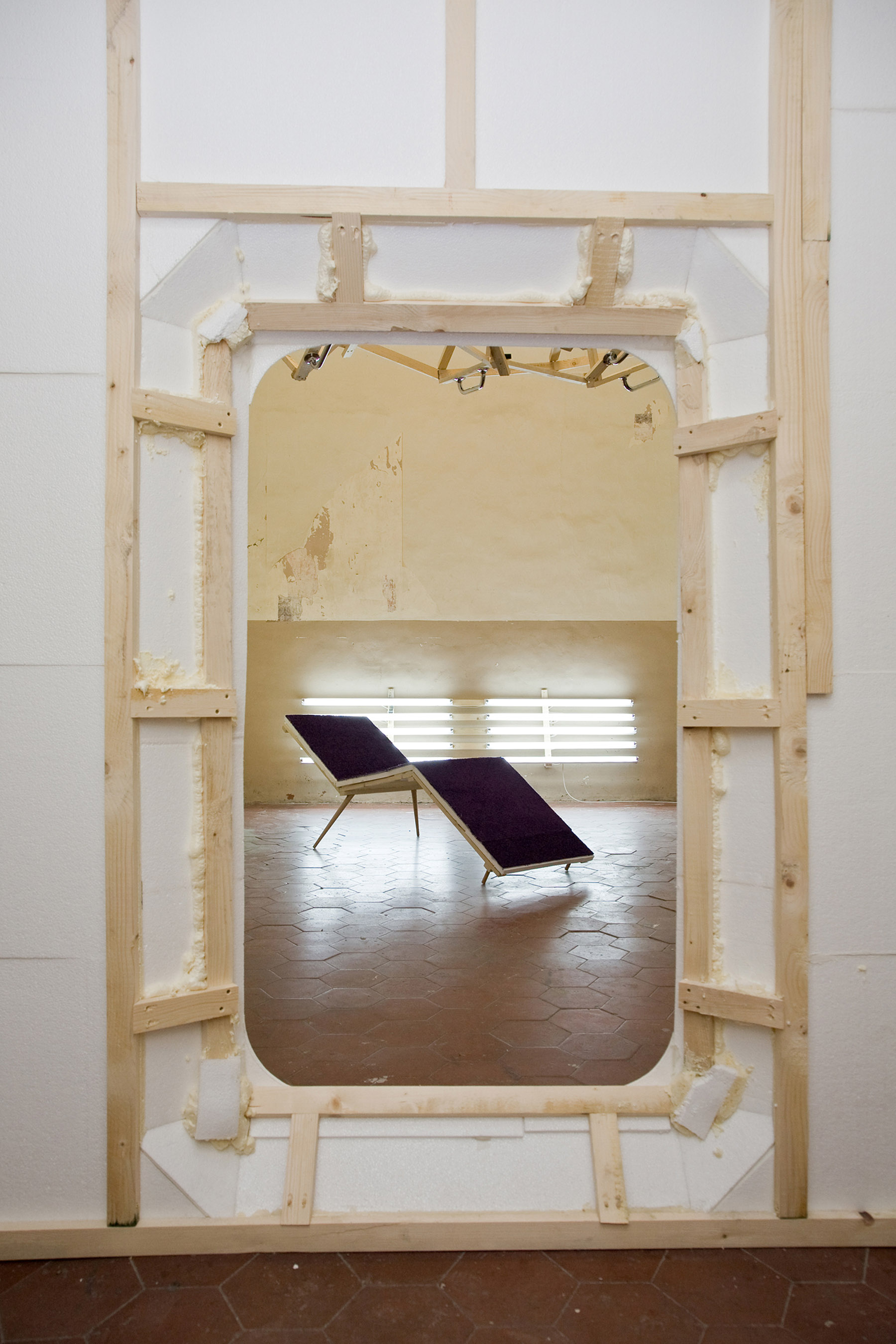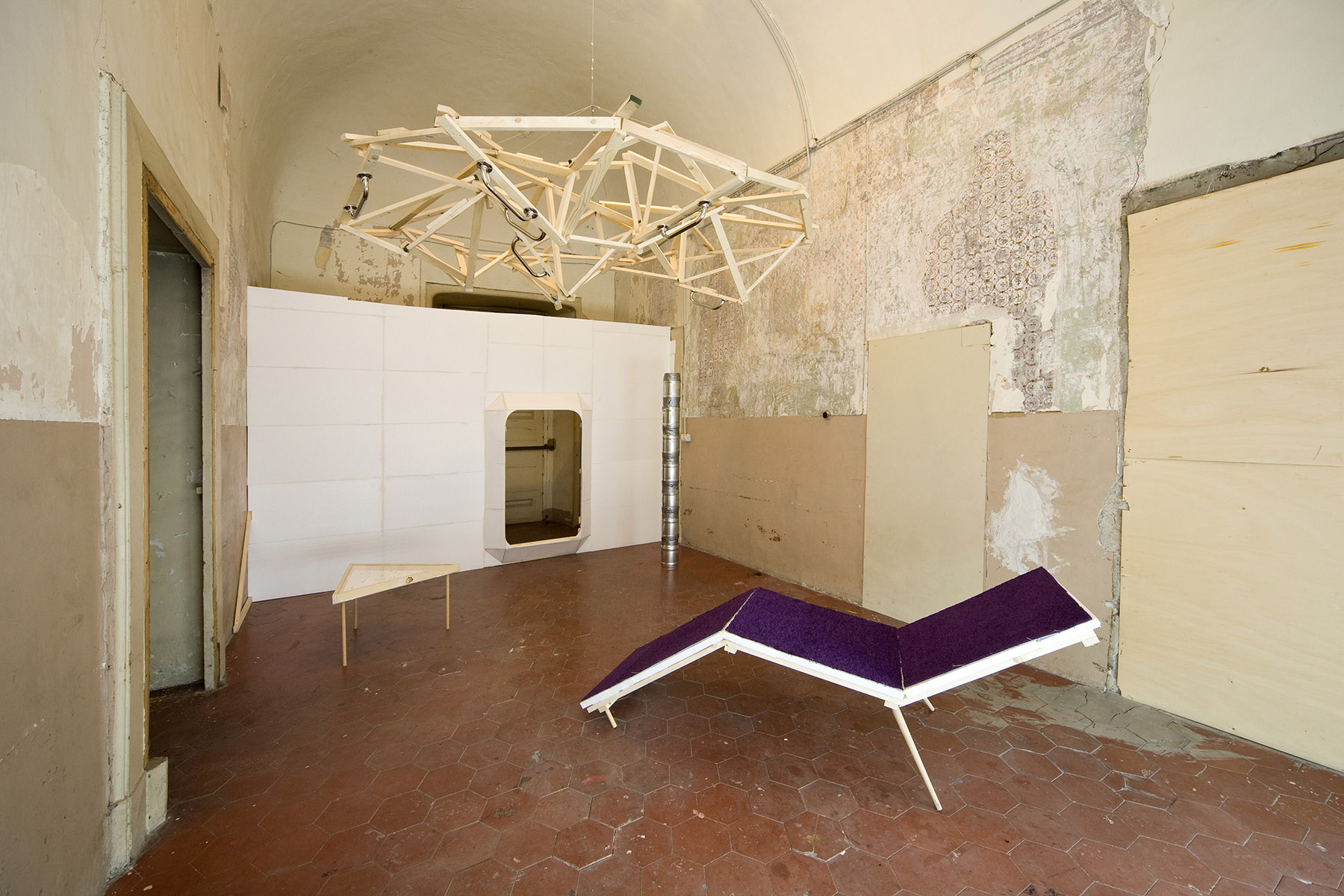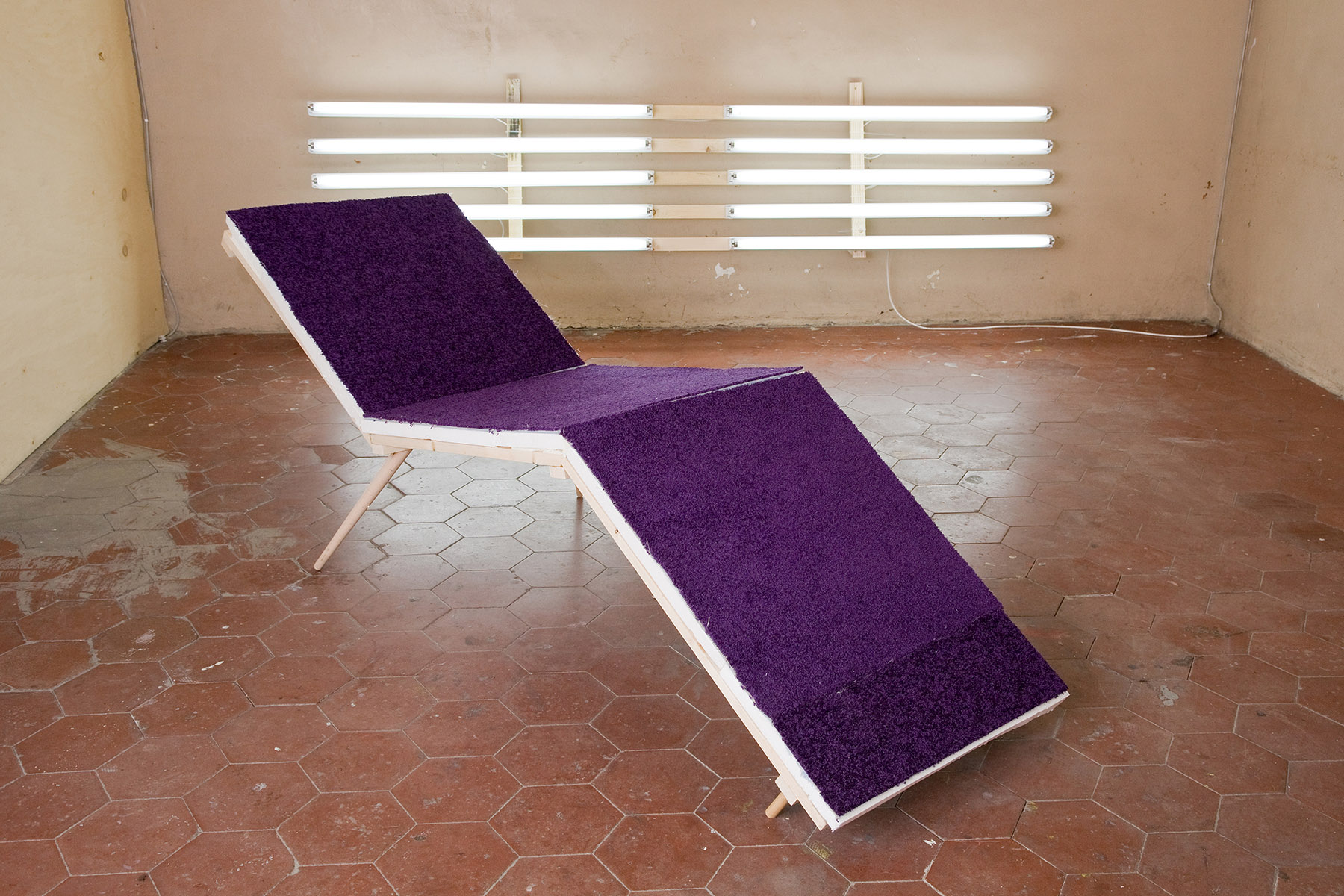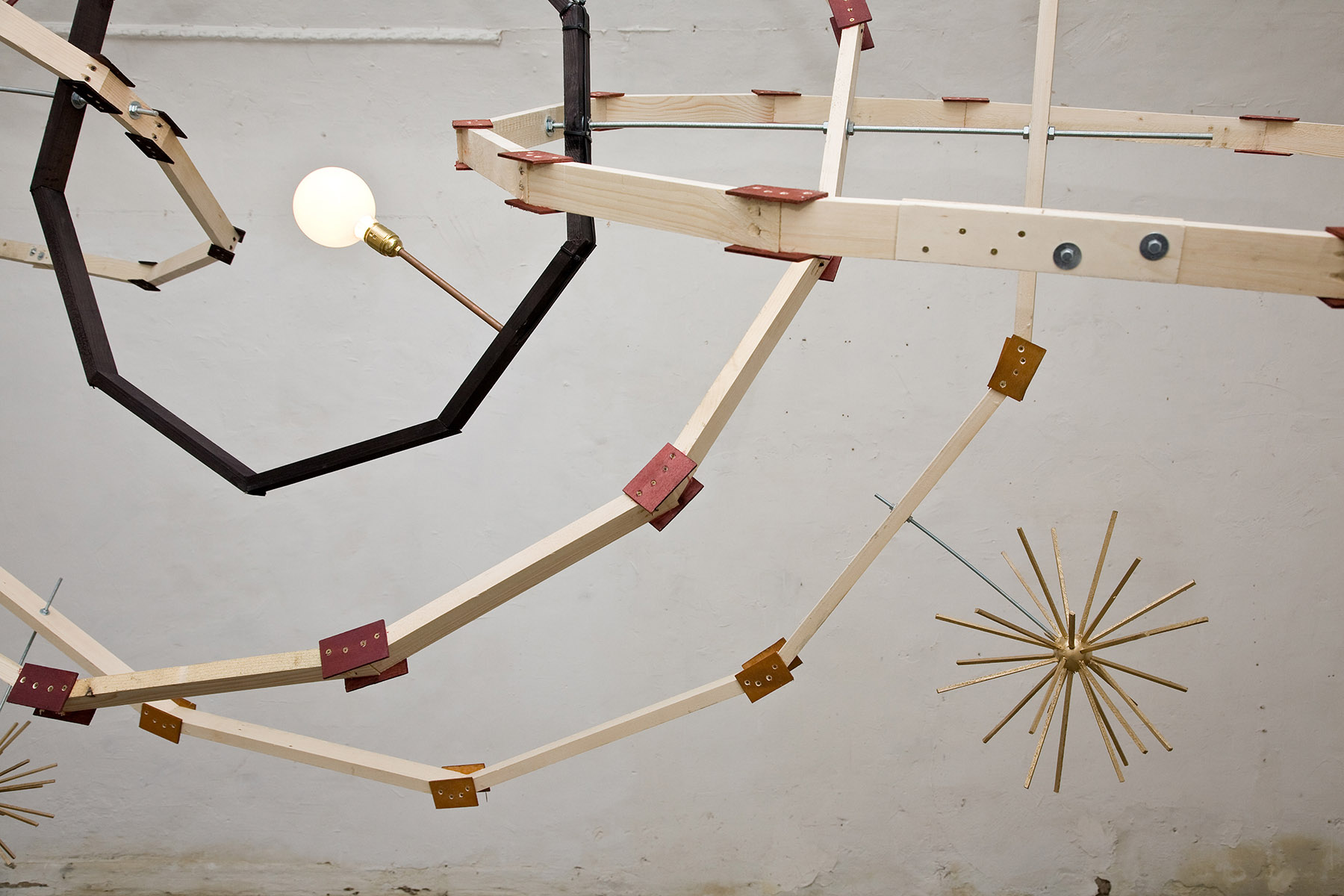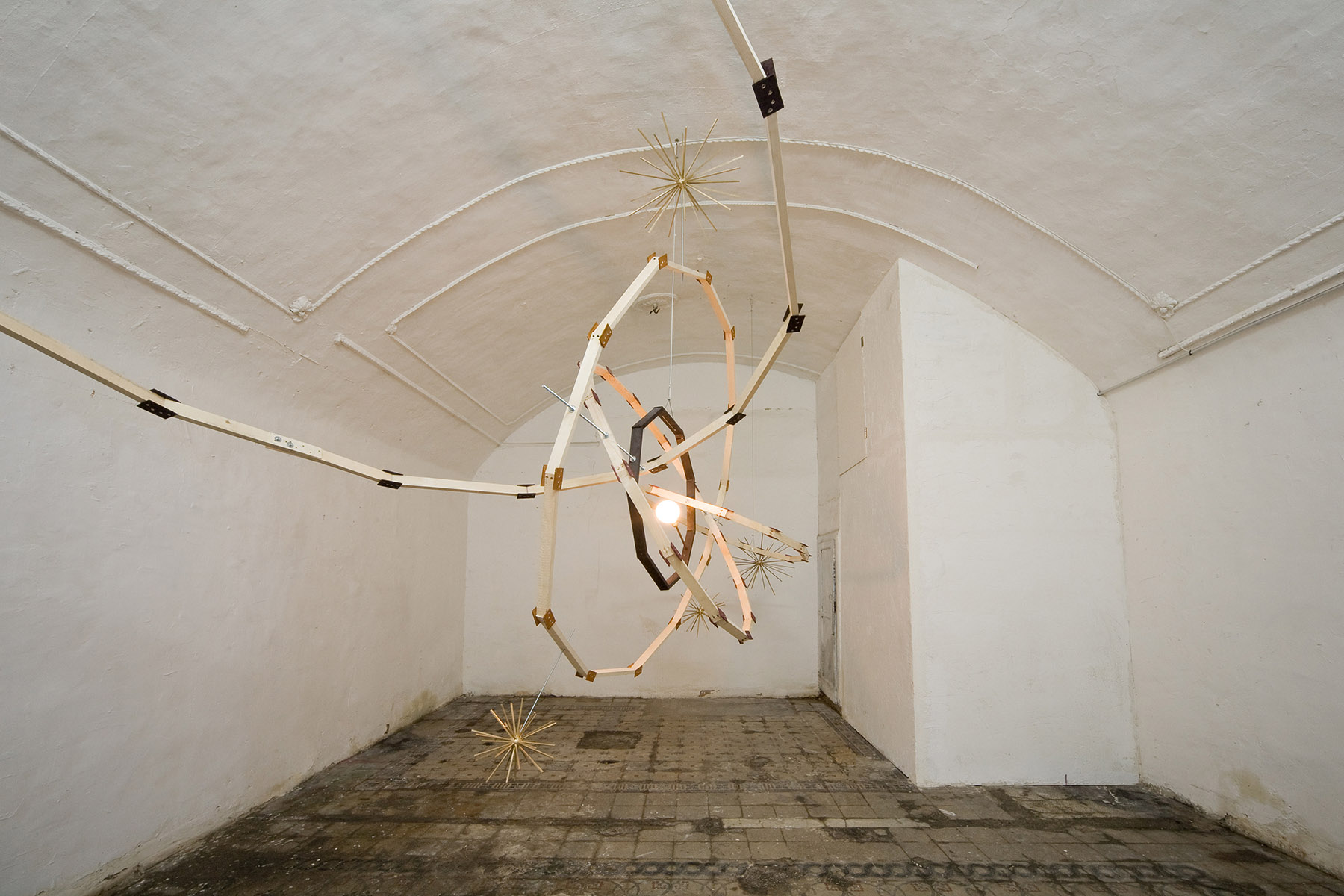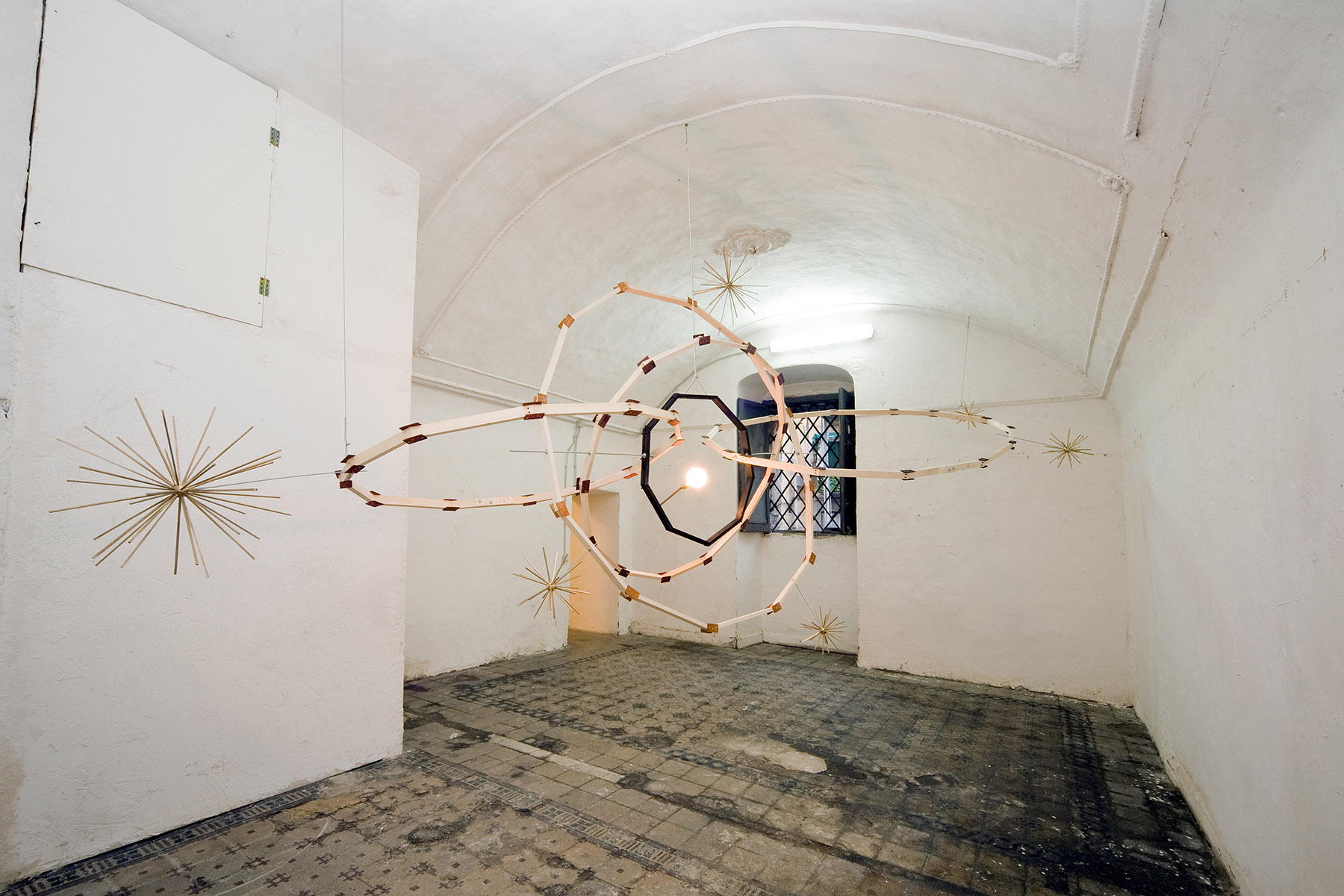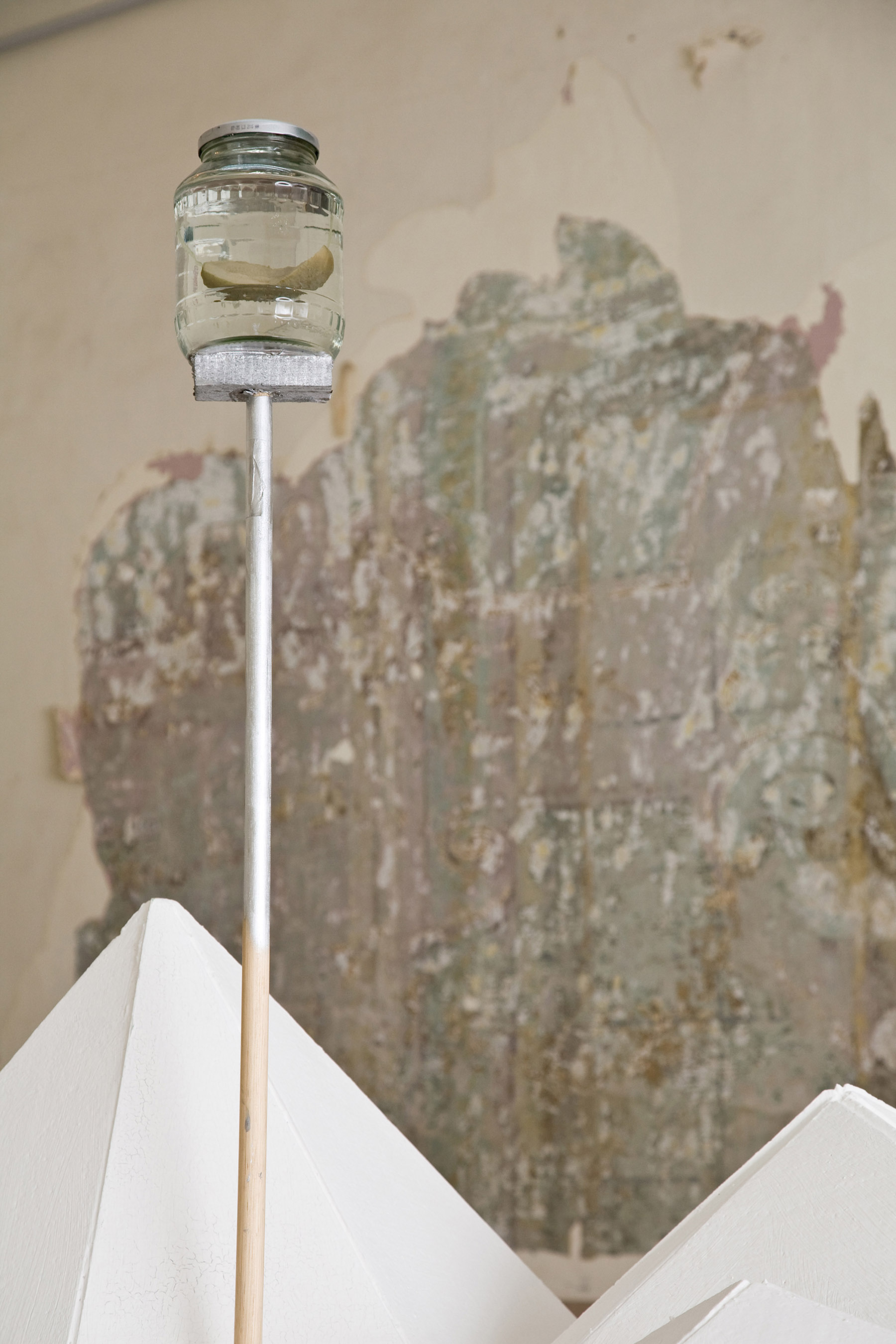25.03.2010 \\ 07.05.2010
On March 25th at 7 pm, Fondazione Morra Greco will open a solo show of German artist Björn Dahlem, featuring two installations that already belonged to the Foundation’s collection alongside a new installation created on purpose for this occasion, in the premises of Palazzo Caracciolo di Avellino.
Björn Dahlem (1974, Munich, Germany) focuses on cosmological models from the fields of science, philosophy, psychology and religion. He uses them as a background for his extensive installations, using different materials such as wood, polystyrene, different kinds of light sources and found objects. His installations are ‘mental habitats’, as he defines them, or spiritual landscapes in which elements belonging to different disciplines blend and create visions of a world filled with mystery.
Dahlem conceived a new installation specifically for this exhibition, titled Black Hole (M-Esferas), which will be shown on the ground floor of the Foundation. It refers to the orbits of stars around a black hole, visualized by a series of wooden rings that intersect and contain different types of light sources. The title is connected to the quest for a great unifying world-formula, a theory of everything that would unify the laws of microcosm and macrocosm. This theory is searched for since the early discoveries of quantum-mechanics. It is meant to solve the contradiction between article and large-scale physics. As the new formula is expected to bring light into some of the most mysterious problems in physics, it is called the M-theory.
On the first floor the exhibition will feature Aua Extrema (2001) and Das De-Sitter-Sanatorium (2000), two installations that were already part of the Foundation’s collection.
Aua Extrema is a rhaeto-romanic expression meaning healing waters. It is a play on words with the german language, in which ‘aua’ refers to an interjection of pain. Aua Extrema is a sort of alchemic scenario. Different elements belonging to the world of science, but also to the world of art and of culture in general, live together in a system of relations: a cube covered by carpet becomes an element to sit or step on, a four-dimensional geometrical figure called ‘hypercube’, a polystyrene structure conjuring up the gloomy sight of mountain tops, a half cucumber in formaldehyde, and loudspeakers diffusing Britney Spears’ music.
Das De-Sitter-Sanatorium (2000) is named after the Dutch mathematician Willem De Sitter, who mathematically theorized the existence of parallel universes. The artist creates an environment for non-practical use. The main elements are a table containing Prozac pills, beer vats, a chair bed and fluorescents, a ceiling made of slats and handles to hold on to. The piece takes up on the original meaning of the word ‘firmament’ as the steady starry vault of the skies. The Das De-Sitter-Sanatorium, initially conceived to be exhibited at an art fair, is seen by the artist as a shelter, a refuge for the mind.
Dahlem’s installations, through their materiality and their weakness, play on the sublimation of the ordinary, questioning the fascination with the high level of abstraction of theoretical systems that are too rigid to explain the magic and mystery surrounding them.
All images Courtesy Fondazione Morra Greco, Napoli
© Danilo Donzelli

